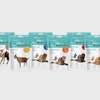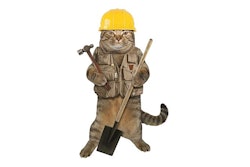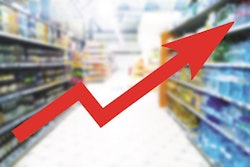
Inflation, including in pet food, is a problem around the globe, even if those of us in the U.S. tend to myopically focus on the U.S. Consumer Price Index (CPI) and pet food inflation here. (Mea culpa.)
For example, the European Union (EU), which is bearing the worst of the fallout from Russia’s invasion of Ukraine, recorded even higher inflation overall in June 2022, 9.6% compared to June 2021, than the U.S. CPI at 9.1%. That’s according to the Organisation for Economic Cooperation and Development (OECD), as reported by the New York Times.
Many countries within the EU are also strong, developed pet food markets, like the U.S. and other countries. How does pet food inflation compare in such markets to overall inflation there, as well as to the U.S., where pet food inflation is now outpacing the CPI?
Pet food, product inflation exceeding 8% in multiple markets
In June 2022, pet food inflation in the U.S. reached 10.3% year over year (YOY), compared to that 9.1% for the CPI. For another North American example, the Canadian economy recorded an inflation rate of 8.1% in June—and inflation for pet food and supplies was at exactly the same rate. Thus, while Canadian pet owners are no doubt feeling the effects of higher pet food prices, at least those price increases are in line with others.
In the EU, the European Central Bank tracks and reports inflation data; and in the case of pet food, it’s included in the same category as other pet supplies (as in Canada). For June 2022, the inflation rate for that category was 8.8%.
It’s worth noting that the Central Bank reports an inflation rate of 8.6% for the overall HICP, or “harmonised index of consumer prices,” defined as the CPI as it is calculated in the EU according to a harmonized approach and a single set of definitions. I’m not sure why the overall HICP for June 2022 was a full point lower than the OECD rate (8.6% versus 9.6%), but it’s interesting that the pet food and supplies HICP in June, at 8.8%, was slightly higher than the overall index—a situation similar to that in the U.S.
The UK economy also recorded a high inflation rate in June, 9.4%. Compared to that, pet products and services (a category encompassing pet food) fared a little better, at 8.4%, according to the country’s Office for National Statistics and reported by GlobalPets.com.
Pain for some pet owners deeper than just higher prices
In all these regions and markets, including the EU and U.S., pet food companies and associations are working to ameliorate the effects of inflation on pets and their owners, as well as ensuring availability of products.
FEDIAF (an umbrella organization representing the European pet food industry) gave a statement to All Pet Food on supply shortages and inflation, attributing them to the war in Ukraine as well as ongoing disruptions that began with the pandemic. “Russia and Ukraine are key global suppliers for several raw materials crucial for pet food formulations and production,” the statement reads in part.
“One particular challenge relates to the fact that the category of complete feeds, which make up the majority of the animal feeds produced, have to be formulated according to legal requirements in such a way to ensure all the requirements for a healthy and balanced diet for the pets,” it continues. “Ingredients often cannot be replaced in the formulations depending on their availability. Thus, to ensure continued food supply, pet food manufacturers have been taking appropriate measures to adjust their sourcing practices, occasionally embracing increased prices of raw materials in a low supply environment.”
FEDIAF ends its statement with the assurance that it and its members are “working hard to ensure the continuity of supply for pet owners and their pets.” Sadly, for some pet owners, that may not be enough. More and more reports are appearing throughout Europe, the U.S. and other markets of animal shelters and humane organizations taking in more pets surrendered by owners who can no longer afford to keep them due to rising costs—including for housing. Some owners are being forced to move to new places (including with relatives) that don’t accommodate pets.
So, high inflation may be starting to hurt pet owners not only in terms of the type of pet foods they can afford to buy, but also in terms of their ownership status. It’s a very painful situation indeed.



















